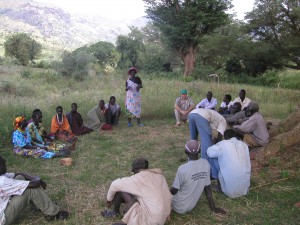Improving Workers’ Health Across the Globe
Posted on by According to the International Labour Organization, globally, 6,300 people die as a result of occupational injury or work-related diseases every day – more than 2.3 million deaths per year. This has a tremendous impact on the global community- individuals, families, and employers.
According to the International Labour Organization, globally, 6,300 people die as a result of occupational injury or work-related diseases every day – more than 2.3 million deaths per year. This has a tremendous impact on the global community- individuals, families, and employers.
The National Institute for Occupational Safety and Health (NIOSH) is committed to improving worker safety and health both domestically and internationally. One of NIOSH’s three strategic goals is to enhance international worker safety and health through global collaborations. The NIOSH Global Collaboration Program facilitates this work with tremendous contributions from across the institute.
NIOSH and the Finnish Institute of Occupational Health (FIOH), both World Health Organization (WHO) Collaborating Centers for Occupational Health, jointly published Improving Workers’ Health Across the Globe. This booklet highlights successful contributions of the Global Network of WHO Collaborating Centres for Occupational Health to improve worker health. The Network, of which NIOSH is the chair, was established in 1990. The Network works collectively on specific projects in an effort to implement World Health Assembly Resolution 60.26: the Global Plan of Action on Workers’ Health, 2008-2017. A searchable database of collaborating centers can be found here.
This recently published success document organizes effective examples from across the globe using the objectives set in the Global Plan of Action for Workers’ Health, a plan created to improve the health of all workers.
Across the Network, and across the globe, we saw how these objectives played out. Here are a few examples:
- Policy instruments devised through the development of national action plans: In Serbia an “Occupational Health Strategy of the Republic of Serbia 2014–2017,” accompanied by the “Action Plan 2014–2017” was created to develop policy and then put policy into action.
- Protecting and promoting health through evidence-based training of health care workers in Venezuela to prevent needlestick injuries.
- Access to services through the inclusion of “occupational health” into the national health plan of Colombia.
- Providing evidence and justification for occupational health and safety action and practice in Grenada through research that brought about interventions to manage heat stress in nutmeg industry workers
- Worker health was incorporated into practice through the training of Ugandan healthcare workers on how to diagnose, treat, and prevent acute pesticide poisoning.
The examples in this success document emphasize the key role collaboration plays when improving working safety and health and what the centers and nongovernmental organizations can achieve by working together. Showcasing global approaches and practices to improve occupational safety and health encourages the global community to learn from one another and adapt approaches that may address similar issues while tailoring to specific needs. Learning from each other by sharing effective strategies can help to improve work health and safety globally.
For information on addition products and trainings generated by the WHO Collaborating Centers, visit the Geolibrary.
Please share the global occupational safety and health projects you are involved in– we would love to hear from you.
Debbie Hoyer, MPH, is a Public Health Advisor in the NIOSH Global Collaborations Program.
Nura Sadeghpour, MPH, is a Health Communication Specialist in the NIOSH Office of the Director.
Leslie Nickels, PhD, MEd, is the Associate Director of the NIOSH Research to Practice Office and co-coordinator of the Office of Global Collaborations.
RADM Margaret M. Kitt, MD, MPH, is an Assistant Surgeon General and the NIOSH Deputy Director for Program.
Posted on by

